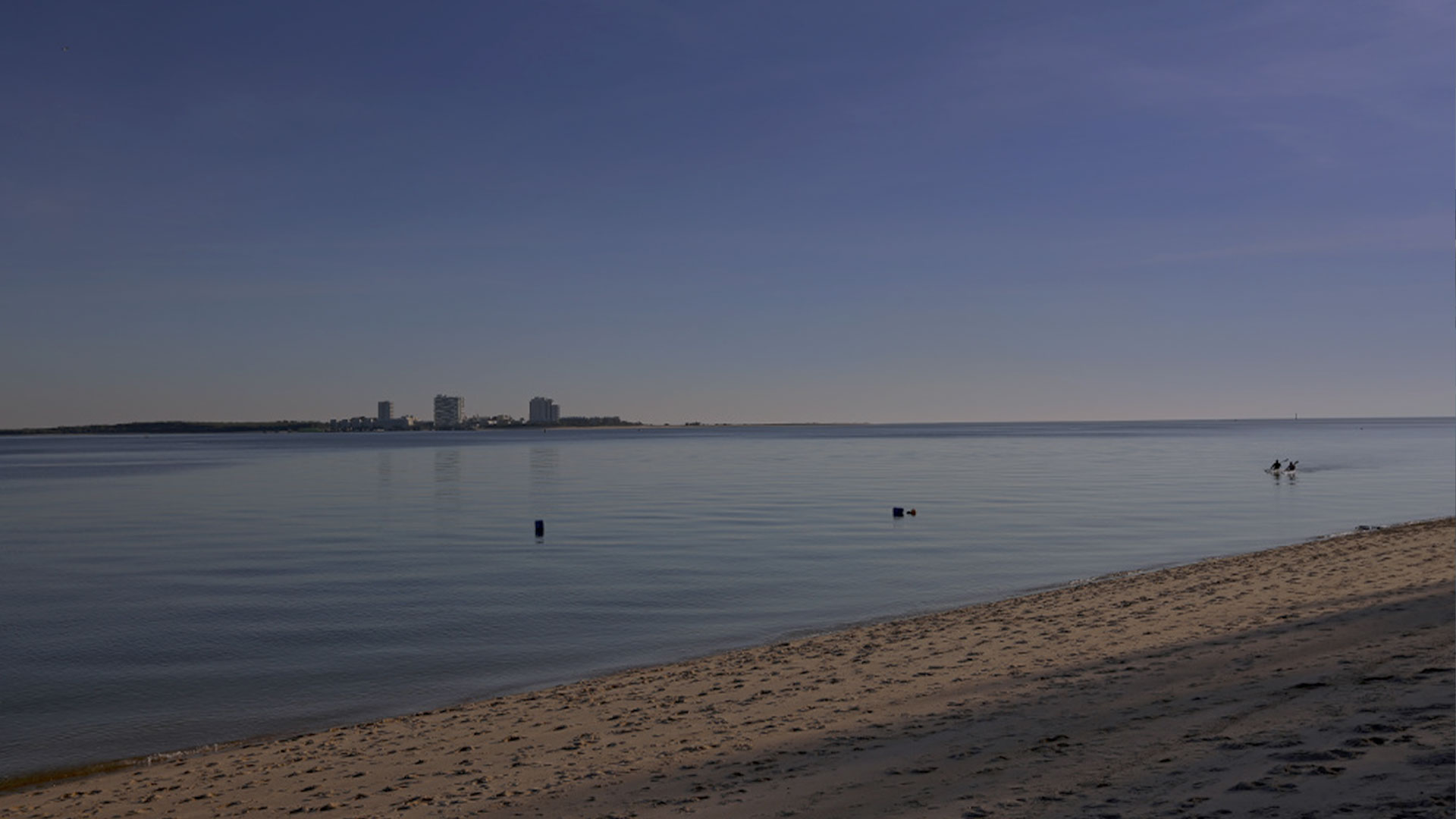Setúbal is a World of... Everyone and for everyone!
The Accessible Tourism Guide is yet another important contribution from the Municipality of Setúbal to a more inclusive and open city for all.
The information it provides is the result of a painstaking work of verifying the spaces and routes accessible to all, but, above all, of a continuous process of transformation of the city and its public spaces.
Accessible Tourism Guide

In 2002, Setúbal Bay was part of the restricted Club of the Most Beautiful Bays in the World and is located between two classified areas: the Sado Estuary Natural Reserve and the Arrábida Natural Park, which includes the Luiz Saldanha Marine Park.
Setúbal is a city, capital of the district, privileged both naturally and historically. It was elevated to city in 1860 and has been the district capital since 1926. The economic basis of its development originated in the production of oysters, in the exploitation of sea salt exported to the whole of Europe and, later, in the fish canning industry, which came to take advantage of the fishing wealth of this sea port. The canned sardines of Setúbal became famous.
Industrialization continued in the XNUMXth century with the installation of the cement and fertilizer industries, car assembly, shipbuilding and paper pulp.
With all the surrounding natural beauty, Setúbal harmonizes a historical and cultural past, materialized in palaces, museums, churches, fortifications and fountains.
The Troia peninsula, on the other side of the River Sado, is an integral part of the Bay of Setúbal, having always had a strong historical relationship with the local population. This peninsula is more than 25 kilometers long and is bathed by the Atlantic Ocean to the west and the Sado Estuary to the east. As a tourist destination, it has several attractions that are worth visiting for all, namely a casino, excellent hotels, restaurants, a marina, 14 white sandy beaches and serene seas, Roman ruins and a golf course.
From the beaches to the bustle of the city, through the extraordinary landscape provided by the Arrábida mountain range, the Sado estuary, the Troia peninsula and the gastronomy and wines, there are many reasons that make those who visit us fall in love with the region of Setúbal.
This magnificent setting has several natural treasures, such as Portinho da Arrábida, one of the 7 Natural Wonders of Portugal, Praia de Galapinhos, already considered the Best Beach in Europe, and it is also the natural habitat of the bottlenose dolphin, one of the rare communities dolphins in Europe.
But a region is made of people. These are the ones who bring with them experiences, stories, traditions and talent. It is for people, for all those who live and visit the magnificent bay of Setúbal, that the initiative to create this guide was born, with the conviction that we already have and will continue to create conditions for everyone to enjoy our city and region without exception.
Whether due to age, limited mobility or the need to use a baby stroller, the objective of this guide is to provide accessible routes and identify the tourist offer that already exists in the region. It is a dynamic document, which seeks a permanent update, as we believe that the Bay of Setúbal will gradually become a Bay for All.
Setúbal is a city, capital of the district, privileged both naturally and historically. It was elevated to city in 1860 and has been the district capital since 1926. The economic basis of its development originated in the production of oysters, in the exploitation of sea salt exported to the whole of Europe and, later, in the fish canning industry, which came to take advantage of the fishing wealth of this sea port. The canned sardines of Setúbal became famous.
Industrialization continued in the XNUMXth century with the installation of the cement and fertilizer industries, car assembly, shipbuilding and paper pulp.
With all the surrounding natural beauty, Setúbal harmonizes a historical and cultural past, materialized in palaces, museums, churches, fortifications and fountains.
The Troia peninsula, on the other side of the River Sado, is an integral part of the Bay of Setúbal, having always had a strong historical relationship with the local population. This peninsula is more than 25 kilometers long and is bathed by the Atlantic Ocean to the west and the Sado Estuary to the east. As a tourist destination, it has several attractions that are worth visiting for all, namely a casino, excellent hotels, restaurants, a marina, 14 white sandy beaches and serene seas, Roman ruins and a golf course.
From the beaches to the bustle of the city, through the extraordinary landscape provided by the Arrábida mountain range, the Sado estuary, the Troia peninsula and the gastronomy and wines, there are many reasons that make those who visit us fall in love with the region of Setúbal.
This magnificent setting has several natural treasures, such as Portinho da Arrábida, one of the 7 Natural Wonders of Portugal, Praia de Galapinhos, already considered the Best Beach in Europe, and it is also the natural habitat of the bottlenose dolphin, one of the rare communities dolphins in Europe.
But a region is made of people. These are the ones who bring with them experiences, stories, traditions and talent. It is for people, for all those who live and visit the magnificent bay of Setúbal, that the initiative to create this guide was born, with the conviction that we already have and will continue to create conditions for everyone to enjoy our city and region without exception.
Whether due to age, limited mobility or the need to use a baby stroller, the objective of this guide is to provide accessible routes and identify the tourist offer that already exists in the region. It is a dynamic document, which seeks a permanent update, as we believe that the Bay of Setúbal will gradually become a Bay for All.
Accessible Tourism Guide


